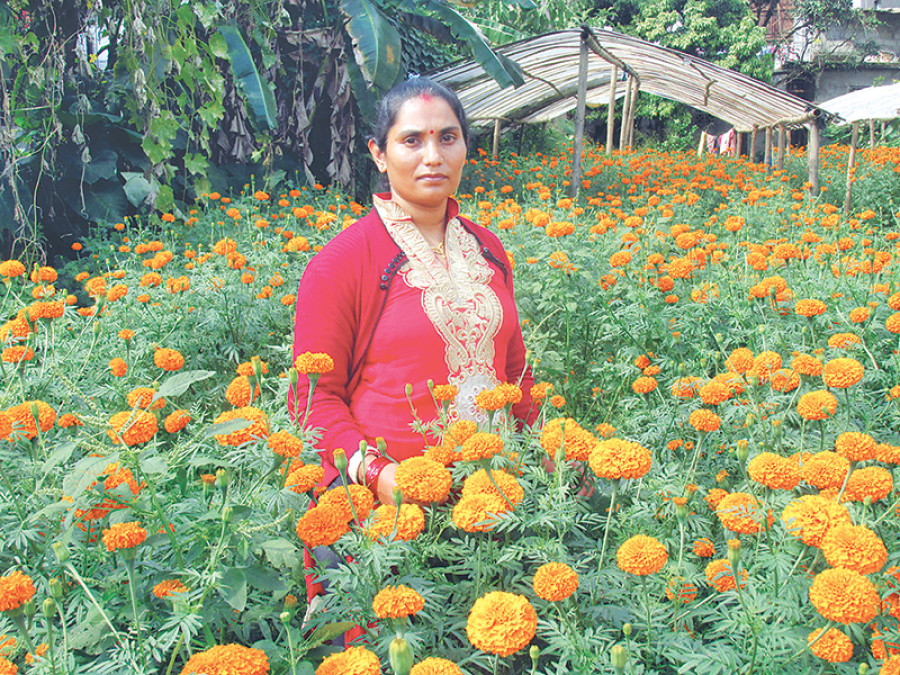Money
Striking gold with floriculture in Nepal
A few years ago when Manjita Bhandari of Pokhara heard about commercial floriculture, she was taken by surprise as she had no idea that flowers could be farmed like vegetable and other crops.
Purna Bk
A few years ago when Manjita Bhandari of Pokhara heard about commercial floriculture, she was taken by surprise as she had no idea that flowers could be farmed like vegetable and other crops. Fast forward to the present, floriculture has not only made her financially independent but also changed her identity to that of a successful entrepreneur.
The District Agriculture Development Office in Pokhara encouraged her to pick up floriculture and she attended a training programme. The rest as they say is history.
Bhandari’s farm now sprawls across 8 ropanis of land and has 10,000 saplings of marigold flower which is very popular among Nepali during Tihar festival. She is planning to sell marigold flower worth Rs 400,000 during the upcoming festival. She has planted three types of marigold targeting this year’s Tihar festival. “I will sell 3000 pieces of garland and 20,000 flowers during this festival,” said Bhandari. “A garland will fetch Rs 50 to 70 whereas a flower will fetch Rs 5 to 10.”
The marigold is germinated in July and the sapling is planted in August.
After two months, the flower is ready for harvest in the lead up to Tihar. “As the flower can be harvested 3 to 4 times a year, I am expecting to earn Rs 700,000 annually,” said Bhandari. “I am satisfied with the earnings from floriculture.”
Apart from Bhandari, other people in Pokhara have become involved in commercial floriculture as well. As is the case across the country, demand for flowers in Pokhara surges during Tihar festival. During the five-day-long celebration which begins next Tuesday, people decorate their houses with strings of flowers such as marigold (sayapatri), globe amaranth (makhamali) and chrysanthemum (godavari). Flowers worth Rs20 million are sold in Pokhara during Tihar. Nepal produces flowers valued at Rs671.44 million annually through commercial farming, according to the latest survey carried out by the Central Bureau of Statistics (CBS) in collaboration with Floriculture Association Nepal in 2014-15.
The country mainly grows seven types of flowers. It produces seasonal flowers like marigold and dahlia, among others, worth Rs221.74 million annually, a CBS report said. Perennial flowers make up the second largest harvest. Nepal grows perennial flowers like rose, chrysanthemum, carnation and azalea worth Rs167.09 million annually.
Nepal also produces decorative plants such as dhupi (Himalayan cypress), shrubs used for hedges and erica, among others, worth Rs120.37 million. Similarly, cut flowers, loose flowers, garden dubo (commonly known as Bermuda grass) and flowers grown from seeds, rhizomes and bulbs are also widely produced in Nepal. The floriculture sector in the country provides employment to 2,300 people on a permanent basis and employs 72,400 people on a daily wage basis, according to the CBS report.




 12.12°C Kathmandu
12.12°C Kathmandu















